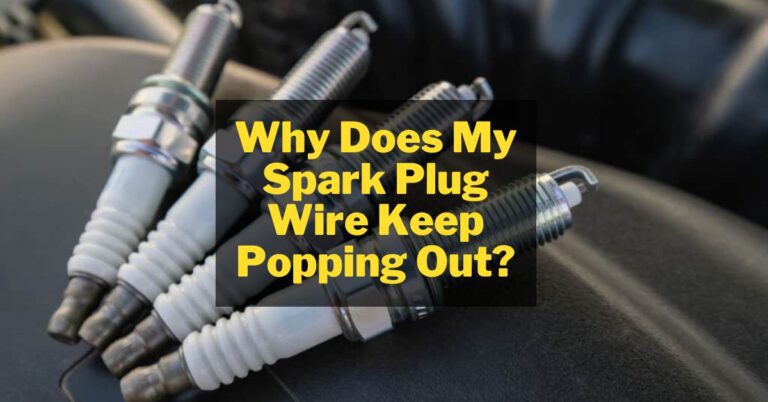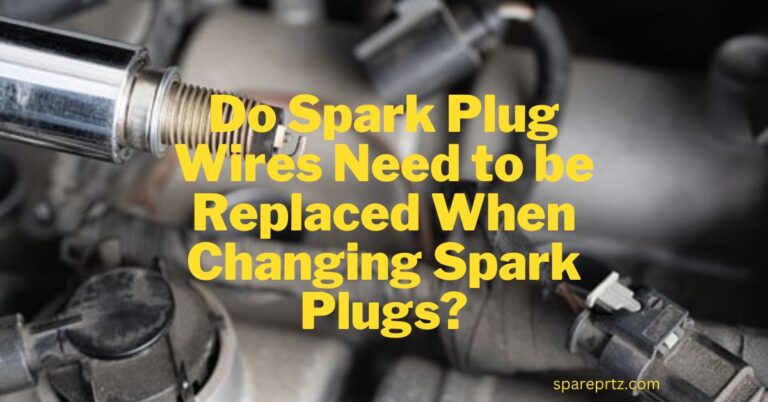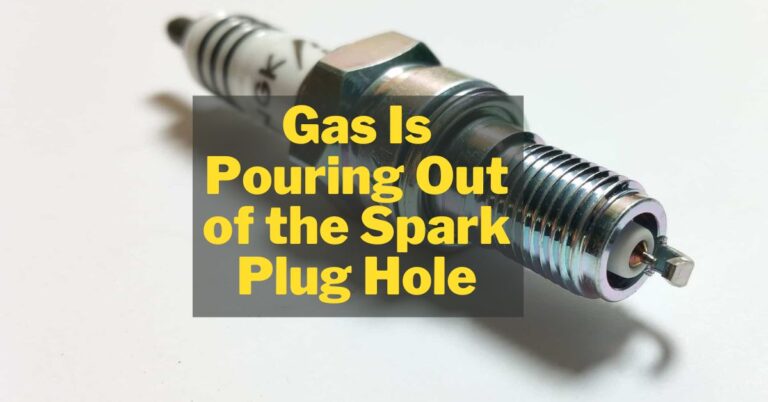Why Does My Lawn Mower Spark Plug Keep Fouling?
A mower’s spark plug is a delicate yet vital component of the engine ignition system of a lawn mower. It is in charge of producing the ignition source that sparks the mixture of air and fuel in its combustion chamber, hence powering the engine.
A metal exterior, an insulating ceramic insulator, and a center electrode make up the spark plug. A spark is created when a charge is transferred from the system that ignites to the spark plug and leaps over the tiny gap between the center electrodes and the ground electrode.
This spark starts the ignition process and powers the lawn mower engine by igniting the compressed air-fuel mixture. Spark plugs come in a variety of heat categories and designs to accommodate different engine designs and operating circumstances.
How Fouling Spark Plug Can Effect the Performace of Lawn Mower?
A lawn mower spark plug that is constantly clogging can be aggravating and lead to poor engine efficiency. When a spark plug becomes fouled with charcoal deposits, petroleum, or other pollutants, it produces an ineffective ignition or no spark at all.
In this post, we’ll look at the causes of ignition plug clogging and provide you with step-by-step directions on how to correct it. By performing these simple steps, you’ll be capable of bringing your lawn mower up and running properly and enjoying a well-kept lawn.
Reasons for Lawn Mower Spark Plug That Keeps Fouling:
Spark plug clogging is a typical issue affecting small engines such as lawnmowers. Numerous factors can contribute to sparking plug fouling. Here are a few typical reasons why a lawn mower spark plug that keeps fouling.
Deposits of Carbon: Carbon deposits on spark plug electrodes are one of the principal reasons for spark plug fouling. Incomplete combustion can result from the engine operating at a slow pace or idling for extended periods of time. The spark is constrained by the carbon deposits, either weakening it or stopping it entirely.
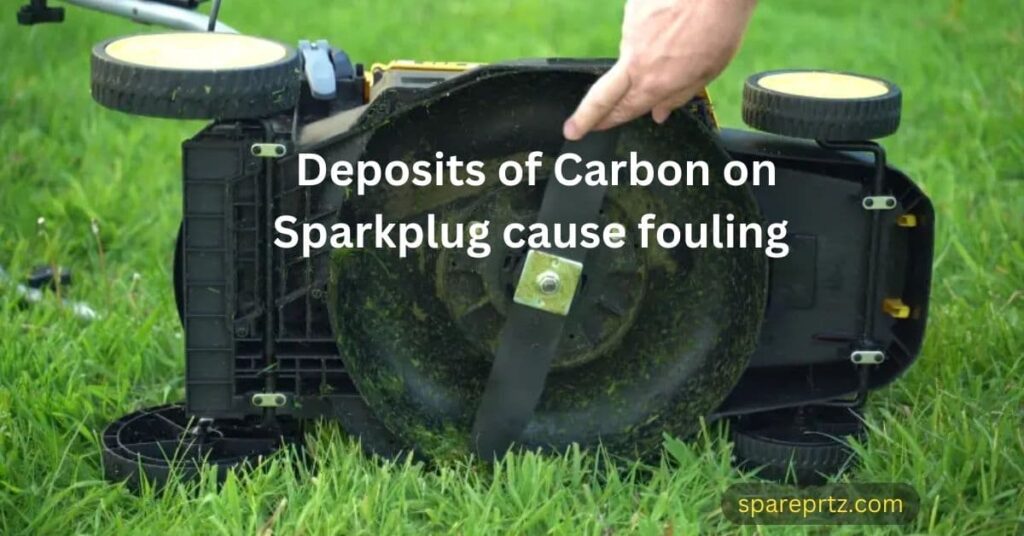
Oil Pollution: When the engine burns oil, it may damage the ignition plug and cause fouling. Oil seeps into the ignition chamber and coats the insulator and electrodes of the spark plug. This prevents adequate spark generation and combustion.
Rich Fuel Blend: A fuel-to-air ratio that is too high might cause spark plug fouling. The process of combustion becomes inefficient and unburned fuel might cover the spark plug when the proportion of air to fuel is excessive on the fuel side.
Contaminants: The performance of the spark plug might be hampered by particles, dirt, and other pollutants that manage to enter the chamber of combustion and adhere to it. A blocked air filter, dusty surroundings, or the use of inferior gasoline can all contribute to this.
Inappropriate Spark Plug Thermal Range: Fouling might result from using a spark plug that isn’t appropriate for the engine and operating circumstances. If a plug is too cold, it might not warm up to the right temperature for operation, which would lead to carbon buildup. On the other hand, pre-ignition from a hot plug can result in damage and fouling.
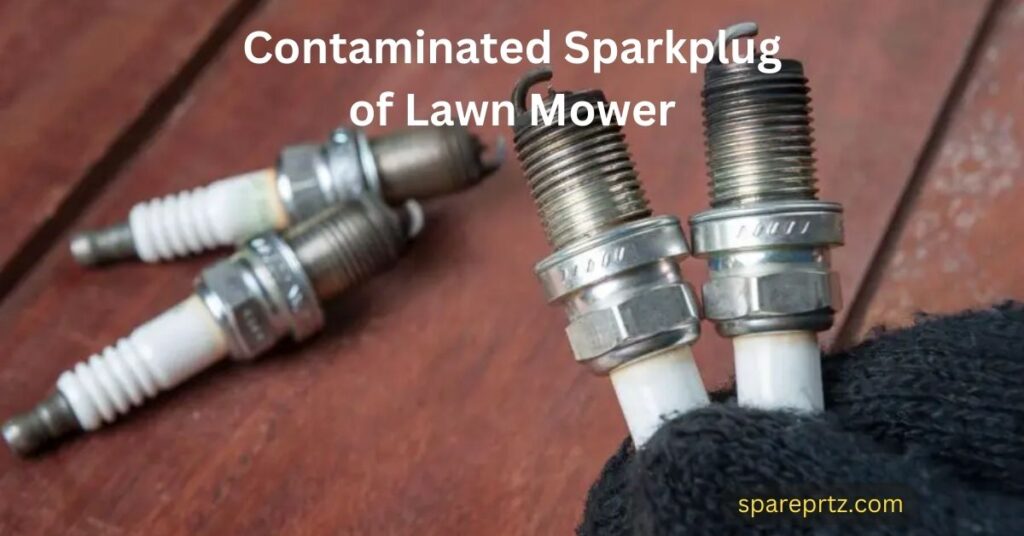
Ignition System Problems: Spark plug fouling can be caused by issues with the system that ignites, including an unreliable ignition coil, damaged spark plug cables, or inadvertent ignition timing. Poor spark timing or insufficient spark energy can lead to clogged plugs and insufficient combustion.
To successfully solve the problem and prevent future occurrences, the fundamental cause of spark plug fouling must be identified. Cleaning or replacing spark plugs on a regular basis can assist in maintaining proper engine performance.
Knowing these reasons will aid in accurate diagnosis and successful problem-solving.
Diagnosis of a Lawn Mower Spark Plug That Keeps Fouling?
Before you begin any repairs, you must first determine when the spark plug is truly fouled. Watch out for these signs/symptoms:
- Difficulty In Starting: A clogged spark plug may be the cause of difficulty starting or non-starting of your lawn mower.
- Engine performance issues: The engine may misfire, run rough, or stall often due to spark plug fouling.
- Blackened or wet spark plug: Check the spark plug after removing it. It is probably polluted if it appears damp, oily, or has a darkened, sooty appearance.
Now that you’ve located the issue, let’s continue on to the solutions.
Follow the Steps to Fix a Lawn Mower Spark Plug That Keeps Fouling:
Step 1: Assemble the Following Tools Before Beginning to Repair:
- Spark plug wrench or socket wrench
- Metal brush
- Gap gauge for spark plugs
- In case a new spark plug is required
- tidy cloth
Step 2: Spark Plug Removal:
Remove the spark plug’s wire from the plug. Spark plugs can be safely taken out of engines using spark plug wrenches or socket wrenches. Take care not to harm the spark plug or any surrounding components.
Step 3: Examine the Spark Plug:
Look for any signs of fouling, such as impurities, oil residue, or carbon deposits, on the spark plug. Remove any carbon or debris from the metal electrode and insulator with a wire brush. Steer clear of vigorous scrubbing because it could harm the spark plug.
Step 4: Examine the Spark Plug Gap:
To check the space between the center electrode and the ground electrode, use a spark plug gap gauge. If necessary, adjust the gap in accordance with the manufacturer’s recommendations. The performance of the spark plug may be impacted by a gap that is either too large or too small.
Step 5: Identify the Source of the Fouling:
Determine the root cause of spark plug fouling. The air filter should be checked and cleaned, and the carburetor should be adjusted if necessary if the problem is caused by an extremely rich fuel-to-air mixture. If high oil consumption or oil leaks are the cause of the issue, have your engine checked?
Step 6: Replace or Reinstall the Spark Plug:
Use a spark plug socket and ratchet to remove the old spark plug.
Install the new spark plug by hand, then tighten it with the spark plug socket and ratchet. Reconnect the spark plug wire.
Step 7: Test and Monitor:
Start the engine after reconnecting the spark plug wire. Make sure the problem is fixed by keeping an eye on how it performs. If you first time change the spark plug and don’t know what to do after that read What Do You Do After Changing Spark Plugs?
Conclusive Words:
You can repair a lawn mower spark plug that keeps fouling by knowing why it happens and following the techniques indicated above. Your lawn mower will run more efficiently with routine maintenance, which includes cleaning or changing spark plugs as necessary.
To avoid future fouling difficulties, remember to solve any underlying problems like fuel combination, leaking oil, or excessive oil usage. The lawnmower will work consistently well with the right maintenance, giving you a well-kept and attractive lawn every year.


